UPSC Daily Current Affairs: 12th January 2025 | Current Affairs & Hindu Analysis: Daily, Weekly & Monthly PDF Download
GS3/Economy
India’s Crude Oil Import Dynamics
Source: ETV Bharat
Why in News?
In December 2024, India's crude oil imports experienced a notable transformation, marked by a significant increase in dependence on West Asian countries, particularly Iraq and the UAE. This shift occurred as supplies from Russia diminished, primarily due to a surge in domestic demand within Russia.
- India's oil imports have shifted towards West Asian suppliers like Iraq and the UAE.
- Russian crude oil supplies have decreased significantly, with a drop in market share.
- Price competitiveness among oil suppliers is impacting India's import strategies.
Additional Details
- Key Drivers of India’s Oil Imports: Prior to the Ukraine conflict, Iraq and Saudi Arabia were India's primary oil suppliers. Following the onset of the war in February 2022, Russia began offering discounts on its crude, leading Indian refiners to capitalize on this opportunity. However, domestic demands in Russia have now limited exports.
- Shift towards West Asia: Indian imports from Russia fell by 17% to 1.48 million barrels per day (bpd), decreasing Russia's share in India's oil basket from 38% to 31.5%.
- Rising Role of West Asia: Iraq’s oil imports surged by 29%, reaching 1.13 million bpd, increasing its share from 18.7% to 24%. The UAE also saw significant growth, with imports rising to 530,000 bpd, a 22.1% increase, elevating its market share to 11.2%.
- Price Dynamics: Russian Urals crude was $5.5 cheaper than Saudi Arabia’s Arab Light, while Iraq's Basrah Medium crude was only $0.80 higher than Dubai crude. Despite reduced discounts, Russian crude remains attractive due to India's high import volumes.
- Future Outlook: In early 2025, Russian oil imports are expected to stay low due to internal constraints, leading Indian refiners to increasingly rely on West Asian sources. A potential recovery in Russian exports may occur around March-April 2025.
As the world's third-largest consumer of crude oil, with an import dependency exceeding 85%, India remains highly sensitive to fluctuations in oil prices. The recent changes in India's crude oil sourcing reflect its adaptability in responding to global market dynamics. While Russia continues to be an essential supplier, the growing significance of West Asian nations like Iraq and the UAE highlights India's strategic focus on ensuring energy security and cost efficiency.
GS3/Environment
Blue Flag Certification for Indian Beaches
Source: The Hindu
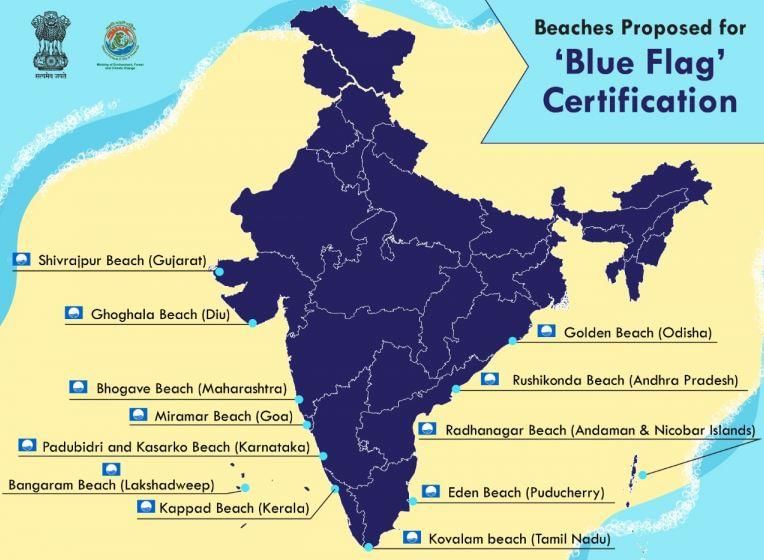 Why in News?
Why in News?Kerala's renowned Kappad Beach in Kozhikode and Chal Beach in Kannur have recently achieved the prestigious Blue Flag certification, awarded by the Denmark-based Foundation for Environmental Education (FEE).
- Kappad and Chal beaches in Kerala have received the Blue Flag certification.
- The Blue Flag certification promotes sustainable tourism and environmental education.
- Other Indian beaches with Blue Flag certification include Shivrajpur (Gujarat), Ghoghla (Diu), Kasarkod, Padubidri (Karnataka), and others.
Additional Details
- Blue Flag Certification: This is an internationally recognized eco-label given by the Foundation for Environmental Education in Denmark, aimed at enhancing beach and marina standards.
- History: The Blue Flag program was initiated in France in 1985 and expanded globally in 2001, focusing on sustainable development in freshwater and marine areas.
- Criteria: The certification is awarded based on four main criteria: water quality, environmental management, environmental education, and safety.
- Mission: The Blue Flag's mission is to promote sustainability in the tourism sector through environmental education and protection.
The addition of Kappad and Chal beaches to the Blue Flag list underscores India’s commitment to environmental sustainability and the promotion of eco-friendly tourism practices.
GS3/Environment
Groundwater Contamination in India
Source: The Hindu
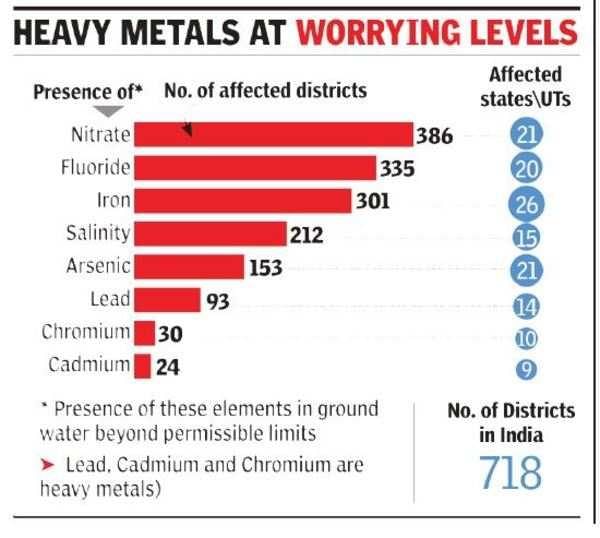 Why in News?
Why in News?An assessment conducted by the Central Ground Water Board (CGWB) has revealed that numerous states in India are facing a significant issue concerning nitrate contamination in groundwater.
- The number of districts with excessive nitrate levels in groundwater increased from 359 in 2017 to 440 in 2023, affecting nearly 56% of districts across India.
- Excessive nitrate levels are defined as concentrations exceeding 45 mg/l.
- Health risks include methemoglobinemia, particularly endangering infants and vulnerable populations.
- Elevated nitrate levels can lead to environmental issues such as algal blooms, harming aquatic ecosystems.
Additional Details
- Groundwater Testing Trends: In 2017, out of 13,028 analyzed samples, only 21 showed excessive nitrate levels. By 2023, of 15,239 samples tested, 19.8% exceeded safe nitrate limits.
- Sources of Nitrate Contamination: Agricultural practices, especially the use of fertilizers like ammonium nitrate and urea, contribute significantly to nitrogen leaching into groundwater.
- States with Highest Contamination: Rajasthan, Karnataka, and Tamil Nadu reported high proportions of tested samples exceeding permissible nitrate levels, with Rajasthan at 49% and Karnataka at 48%.
- Key Contaminants: Other significant contaminants include Arsenic, Iron, Fluoride, and Uranium, with high fluoride concentrations reported in states like Rajasthan and Haryana.
The findings underscore the urgent need for effective management and regulations regarding groundwater resources to mitigate contamination and protect public health and the environment.
GS3/Environment
Punatsangchhu-II Hydroelectric Project (PHEP-II)
Source: MSN
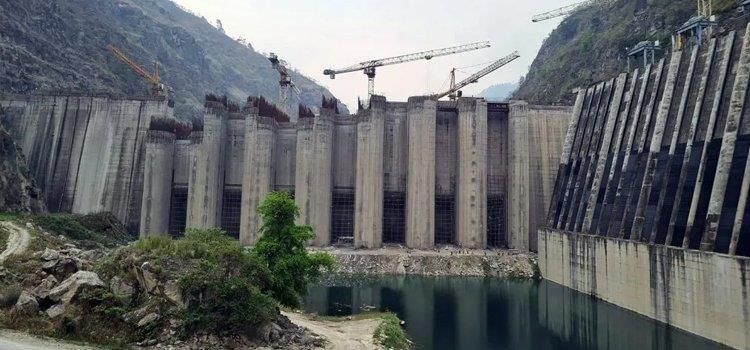 Why in News?
Why in News?Bharat Heavy Electricals Ltd. (BHEL) has announced the successful commissioning of the first two units of the 6x170 MW Punatsangchhu-II hydroelectric project (PHEP-II) in Bhutan, highlighting a significant milestone in renewable energy development in the region.
- PHEP-II is a run-of-the-river hydroelectric power-generating facility with a total capacity of 1 GW.
- The project is located on the right bank of the Punatsangchhu River in the Wangdue Phodrang district of Bhutan.
Additional Details
- Project Development: Developed by the Punatsangchhu II Hydroelectric Project Authority under an Inter-Government Agreement (IGA) between the Royal Government of Bhutan and the Government of India.
- Specifications:
- The facility includes a 91m-high and 223.8m-long concrete gravity dam.
- An 877.46m-long and 12m-diameter diversion tunnel has a discharge capacity of 1118 cubic metres per second.
- The project features a 168.75m-long and 22m-high upper cofferdam, along with a 102.02m-long and 13.5m-tall downstream cofferdam.
- The power plant will house an underground powerhouse equipped with six Francis turbines, each with a capacity of 170 MW.
- Upon commissioning of all units, the expected annual power generation will reach 4,357 million units of electricity.
This project is funded by the Government of India, comprising a 30% grant and 70% loan at 10% annual interest, repayable in 30 equated semi-annual installments starting one year after the mean date of operation. Additionally, all surplus power generated will be exported to India, showcasing the collaboration between Bhutan and India in the energy sector.
GS3/Environment
What is Utricularia?
Source: Frontiers
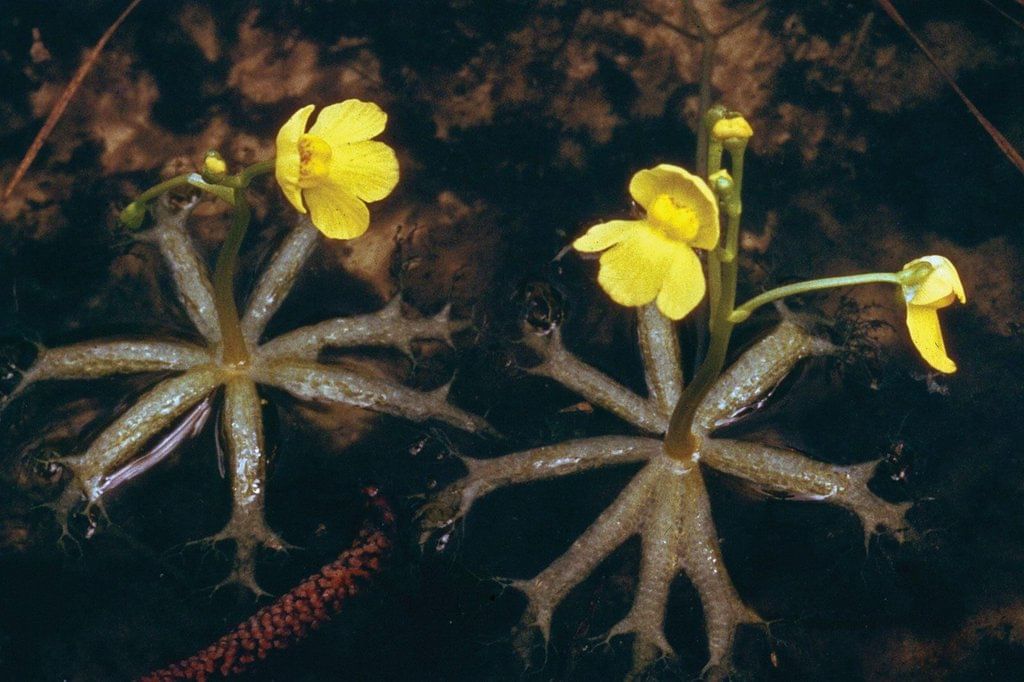 Why in News?
Why in News?A rare and unique carnivorous plant called Utricularia has been discovered in significant quantities this season at Rajasthan's Keoladeo National Park.
- Utricularia is a genus of carnivorous plants belonging to the family Lentibulariaceae.
- It consists of approximately 220 species, making it the most diverse genus of carnivorous plants globally.
- These plants are known for their unique hollow sacs that capture and digest small aquatic animals.
- Utricularia can be found in various aquatic environments, including lakes and streams.
Additional Details
- Habitat: Utricularia species thrive in temperate and tropical habitats worldwide, with some species classified as invasive.
- Plant Structure: They typically lack roots and feature a floating stem with simple or divided leaves. Their bladders function as traps for small organisms, utilizing a quick mechanism to capture prey.
- Prey Capture Mechanism: The bladders have a trap door that opens when tiny hairs are triggered by prey, allowing it to be sucked in and sealed within milliseconds.
- Flowers: Utricularia plants produce bisexual and bilaterally symmetrical flowers.
This discovery not only highlights the biodiversity within Keoladeo National Park but also emphasizes the ecological significance of carnivorous plants like Utricularia in their respective ecosystems.
GS3/Science and Technology
Esterase Enzyme and Its Role in Plastic Degradation
Source: Nature
Why in News?
A recent breakthrough by a team of researchers has highlighted the potential of the esterase enzyme in breaking down diethyl hexyl phthalate (DEHP), a common plasticizer. This advancement is significant in addressing plastic pollution.
- The esterase enzyme is produced by the soil bacterium Sulfobacillus acidophilus.
- It has been structurally characterized through X-ray crystallography.
- The enzyme remains active for about a month and efficiently catalyzes the degradation of DEHP into mono-(2-ethylhexyl) phthalate (MEHP) and 2-ethyl hexanol.
- Integration of this enzyme into bacteria can accelerate the degradation process of plasticizers.
Additional Details
- Plasticizers: These are chemicals incorporated into plastics and personal care products to enhance flexibility, durability, and appearance. They can be found in items such as baby toys, shampoos, soaps, and food containers.
- Plasticizers pose a health risk as they can be absorbed through the skin, raising concerns about their impact on human health.
- The esterase enzyme, along with other enzymes previously identified from Comamonas testosteroni, can convert high molecular weight phthalate plasticizers into benign byproducts like water and carbon dioxide.
The overall findings suggest that utilizing bacterial enzymes could offer a sustainable solution to combat plastic pollution. By integrating these enzymes into bacteria, the degradation process can be sustained longer, making them effective tools in environmental cleanup efforts.
GS2/Polity
National Organ and Tissue Transplant Organisation (NOTTO) Updates
Source: Economic Times
Why in News?
The National Organ and Tissue Transplant Organisation (NOTTO) has recently announced that central government employees who donate organs will be eligible for 42 days of special casual leave. This initiative aims to encourage organ donation and support donors during the donation process.
- Central government employees can now avail of 42 days of special casual leave for organ donation.
- NOTTO is responsible for implementing the National Organ Transplant Program (NOTP) in India.
- NOTTO maintains a national registry of organ and tissue donors and recipients.
Additional Details
- About NOTTO: Established under the Directorate General of Health Services, Ministry of Health and Family Welfare, Government of India, NOTTO serves as the apex organization for organ transplant activities.
- Divisions of NOTTO:
- National Human Organ and Tissue Removal and Storage Network: This division coordinates the procurement and distribution of organs and tissues across India, as mandated by the Transplantation of Human Organs (Amendment) Act 2011.
- National Biomaterial Centre (National Tissue Bank): Focused on tissue donation, this centre aims to address the gap between demand and supply of various tissues while ensuring quality assurance.
This recent initiative by NOTTO reflects the government's commitment to promoting organ donation in India, enhancing the overall organ transplant system, and ensuring better support for donors.
GS3/Defence & Security
 |
Download the notes
UPSC Daily Current Affairs: 12th January 2025
|
Download as PDF |
Regional Conference on Drug Trafficking and National Security
Source: PIB
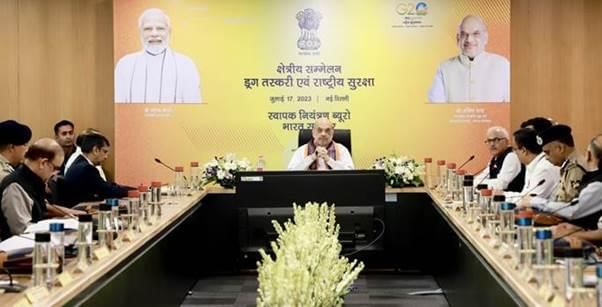 Why in News?
Why in News?Union Home Minister Amit Shah chaired a regional conference focusing on 'Drug Trafficking and National Security', emphasizing the need for strict legal actions against illegal drug labs to effectively combat drug trafficking. This conference, organized by the Narcotics Control Bureau (NCB), aimed to address the escalating issue of drug trafficking and its ramifications on national security, particularly in eight states and union territories of northern India.
- India experienced record drug seizures in 2024, totaling narcotics worth Rs 16,914 crore, marking the highest amount since Independence.
- There has been a seven-fold increase in drug seizures over the past decade, attributed to the government's decisive measures.
- The conference highlighted the challenges posed by the dark web, cryptocurrency, and drones in combating drug trafficking.
Additional Details
- Dark Web: A section of the deep web not accessible through conventional search engines, requiring specialized software like Tor (The Onion Router) for access.
- The Minister underscored the need for technical solutions through collaboration among states, the Central government, and technologists to combat these challenges.
- The government has successfully dismantled numerous narco-terrorism networks in states such as Jammu & Kashmir, Punjab, Gujarat, and Uttar Pradesh, reducing terrorism linked to drug trafficking.
- The inaugural Drug Disposal Fortnight (January 11–25) aims to destroy 1 lakh kg of narcotics valued at Rs 8,600 crore as part of a strategy for a drug-free India by 2047.
- The Home Ministry's three-pronged strategy includes strengthening institutional frameworks, enhancing inter-agency coordination, and launching public awareness campaigns.
In conclusion, the conference aims to bolster the national response to drug trafficking and its security implications. The Home Minister emphasized the crucial role of youth in national development and the collective responsibility to combat drug addiction, aligning with the vision of a drug-free India as part of the Nasha Mukt Bharat Abhiyan.
GS2/International Relations
India Joins the UN Committee of Experts on Big Data and Data Science for Official Statistics
Source: Times of India
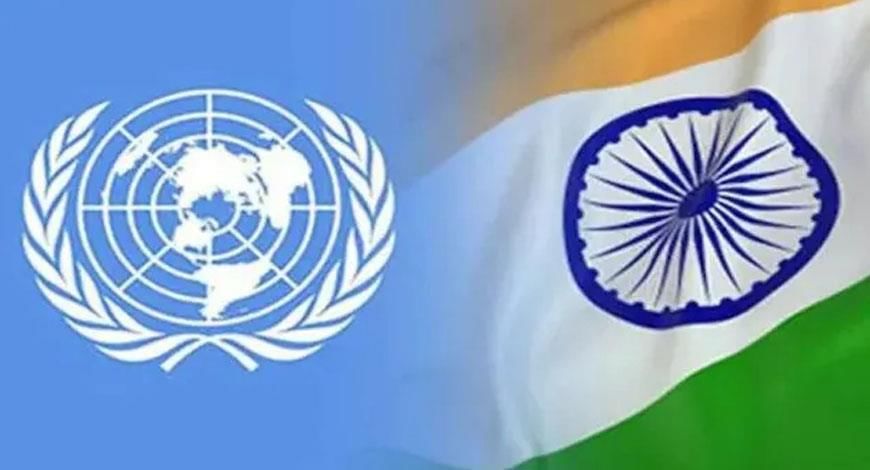 Why in News?
Why in News?India has recently become a member of the UN Committee of Experts on Big Data and Data Science for Official Statistics (UN-CEBD), highlighting its commitment to utilizing big data for enhancing official statistical practices.
- The UN-CEBD was established in 2014, with Australia serving as its inaugural Chair.
- The committee focuses on understanding the benefits and challenges associated with Big Data, particularly in the context of monitoring sustainable development goals.
- The committee's governance includes an Advisory Board and a UN Bureau, which oversee its operations and strategic direction.
Additional Details
- Mandate:The UN-CEBD aims to:
- Provide strategic vision and coordination for a global big data program for official statistics, especially related to the 2030 Agenda for Sustainable Development.
- Encourage the practical use of big data sources, including cross-border data, while addressing existing challenges.
- Promote capacity-building, training, and the sharing of experiences across nations.
- Advocate for the use of big data in policy applications, focusing on monitoring sustainable development goals.
- Build public trust in the application of big data for official statistics.
- The committee is scheduled to meet approximately four times a year to assess its work and provide strategic guidance.
India's participation in the UN-CEBD underscores its dedication to leveraging big data for improving statistical systems and enhancing its capabilities in monitoring and reporting for sustainable development.
GS3/Science and Technology
Are Lithium Batteries on Flight Dangerous?
Source: The Independent
Why in News?
The safety of lithium-ion batteries has become a significant concern in aviation due to their widespread use in various devices, raising questions about their fire risks during air travel.
- Lithium-ion batteries are prevalent in modern technology, powering devices like electric vehicles and consumer electronics.
- IFALPA emphasizes the need for stringent safety protocols regarding lithium-ion battery transport in aviation.
Additional Details
- Background: Lithium-ion batteries are favored for their high energy density and rechargeability, but they also pose fire hazards under certain conditions.
- Fire Risks:The potential for battery fires arises from short circuits, which can lead to excessive heat and oxygen production. Contributing factors include:
- Mechanical Abuse: Deformation of battery structures.
- Electrical Abuse: Degradation from improper usage.
- Thermal Abuse: Heat buildup causing "thermal runaway."
- IFALPA's Position Papers:Key documents that outline safety concerns and recommendations include:
- POS01: Advocates for regulations on the safe transport of batteries.
- POS02: Calls for specialized fire safety protocols for handling lithium battery fires.
- POS03: Highlights risks associated with batteries in critical aircraft components.
- Case Studies: Incidents, such as battery fires after exposure to extreme conditions, highlight the need for better safety measures.
- Mitigation Strategies:Suggestions for enhancing safety include:
- Improved packaging and labeling of batteries.
- Development of specialized firefighting equipment.
- Public awareness campaigns on safe handling practices.
In conclusion, while lithium-ion batteries are crucial for modern technology, their fire hazards necessitate urgent attention. The findings from IFALPA's position papers call for improved safety measures and regulatory reforms to ensure the secure use of these batteries in aviation and beyond.
GS3/Defence & Security
Delivery of INS Vaghsheer: A Milestone in India's Defence Capabilities
Source: Financial Express
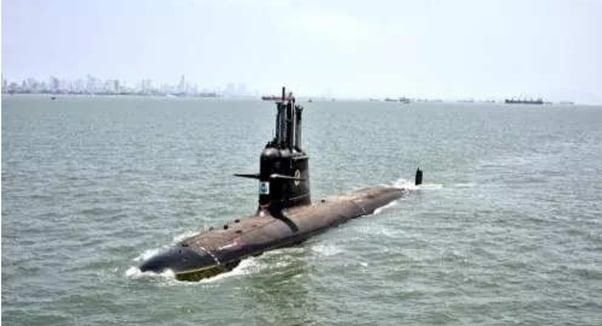 Why in News?
Why in News?Mazagon Dock Shipbuilders Limited (MDL) in Mumbai has achieved a significant milestone in enhancing India’s naval defence capabilities with the delivery of INS Vaghsheer, the sixth and final submarine in the Scorpene-class series, to the Indian Navy.
- INS Vaghsheer is the sixth submarine of the Kalvari-class series.
- It is named after the sand fish, a formidable predator of the Indian Ocean.
- The submarine was launched in April 2022 and has undergone thorough trials.
Additional Details
- Kalvari-class Submarines: This class includes five other submarines: Kalvari, Khanderi, Karanj, and Vela.
- Advanced Features: INS Vaghsheer incorporates cutting-edge stealth technologies, featuring reduced radiated noise levels and a sophisticated hydrodynamic design, making it one of the quietest submarines globally.
- Combat Capabilities: The submarine is equipped for various combat scenarios, utilizing precision-guided weapons such as torpedoes and tube-launched anti-ship missiles, enhancing its offensive and defensive operational capabilities.
- Mission Versatility: It is designed for diverse missions, including anti-submarine warfare and intelligence gathering, and can operate effectively in various maritime environments.
- Indigenous Systems: The submarine features systems developed within India, such as the air-conditioning plant, internal communication network, and the Ku-Band SATCOM system.
The successful delivery of INS Vaghsheer underscores India's commitment to strengthening its naval capabilities and highlights the significance of indigenous development in defence technology.
|
39 videos|4564 docs|977 tests
|
FAQs on UPSC Daily Current Affairs: 12th January 2025 - Current Affairs & Hindu Analysis: Daily, Weekly & Monthly
| 1. What are the key factors influencing India's crude oil import dynamics? |  |
| 2. What is the significance of Blue Flag Certification for Indian beaches? |  |
| 3. What are the primary causes of groundwater contamination in India? |  |
| 4. What are the benefits and challenges of the Punatsangchhu-II Hydroelectric Project? |  |
| 5. How does the National Organ and Tissue Transplant Organisation (NOTTO) function in India? |  |




























